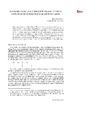Identificador persistente para citar o vincular este elemento:
https://accedacris.ulpgc.es/jspui/handle/10553/59469
| Campo DC | Valor | idioma |
|---|---|---|
| dc.contributor.author | Cabrera Abreu, Mercedes | en_US |
| dc.date.accessioned | 2019-12-18T17:00:08Z | - |
| dc.date.available | 2019-12-18T17:00:08Z | - |
| dc.date.issued | 1997 | en_US |
| dc.identifier.issn | 0210-6124 | en_US |
| dc.identifier.other | Dialnet | - |
| dc.identifier.uri | https://accedacris.ulpgc.es/handle/10553/59469 | - |
| dc.language | eng | en_US |
| dc.relation.ispartof | Atlantis | en_US |
| dc.source | Atlantis: Revista de la Asociación Española de Estudios Anglo-Norteamericanos [ISSN 0210-6124], v. 19 (2), p. 25-34 | en_US |
| dc.subject | 57 Lingüística | en_US |
| dc.title | Boundary tones as evidence for the exclusion of l(ow)-tone from phonological representation | en_US |
| dc.type | info:eu-repo/semantics/article | en_US |
| dc.type | Article | en_US |
| dc.identifier.url | http://dialnet.unirioja.es/servlet/articulo?codigo=637951 | - |
| dc.description.lastpage | 34 | - |
| dc.identifier.issue | 2 | - |
| dc.description.firstpage | 25 | - |
| dc.relation.volume | 19 | - |
| dc.investigacion | Artes y Humanidades | en_US |
| dc.type2 | Artículo | en_US |
| dc.contributor.authordialnetid | 346031 | - |
| dc.identifier.dialnet | 637951ARTREV | - |
| dc.identifier.ulpgc | Sí | es |
| dc.description.sellofecyt | Sello FECYT | |
| dc.description.ahci | AHCI | |
| dc.description.ssci | SSCI | |
| dc.description.erihplus | ERIH PLUS | |
| item.grantfulltext | open | - |
| item.fulltext | Con texto completo | - |
| crisitem.author.dept | GIR Discourse, Communication and Society | - |
| crisitem.author.dept | Departamento de Filología Moderna, Traducción e Interpretación | - |
| crisitem.author.orcid | 0000-0002-7880-1460 | - |
| crisitem.author.parentorg | Departamento de Filología Moderna, Traducción e Interpretación | - |
| crisitem.author.fullName | Cabrera Abreu, Mercedes | - |
| Colección: | Artículos | |
Visitas
68
actualizado el 03-ago-2024
Descargas
269
actualizado el 03-ago-2024
Google ScholarTM
Verifica
Comparte
Exporta metadatos
Los elementos en ULPGC accedaCRIS están protegidos por derechos de autor con todos los derechos reservados, a menos que se indique lo contrario.
